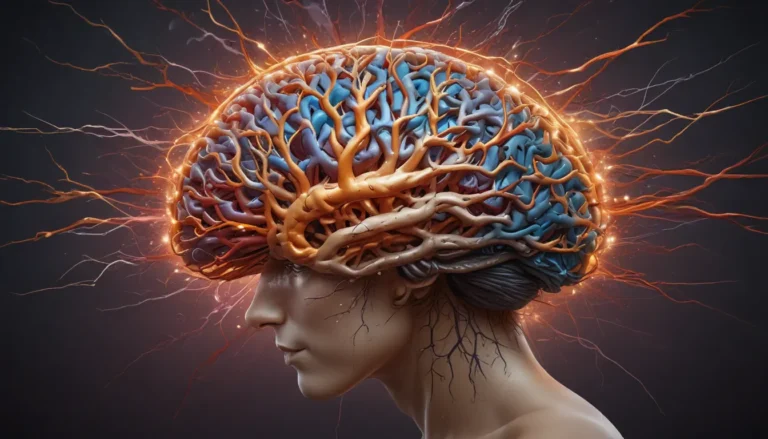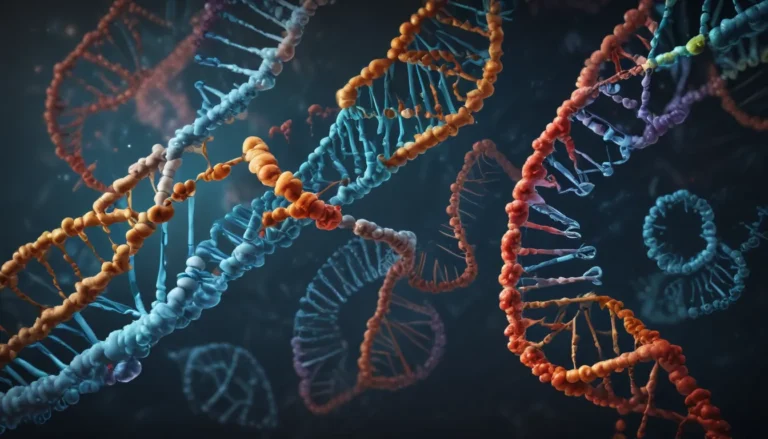A Note About Images: The images used in our articles are for illustration purposes only and may not exactly match the content. They are meant to engage readers, but the text should be relied upon for accurate information.
In the vast realm of biology, bioinformatics tools stand as pillars of innovation, enabling researchers to unravel the mysteries hidden within massive biological datasets. Through a harmonious fusion of computer science, mathematics, and biology, these tools serve as indispensable aids in deciphering genetic variations, protein structures, and disease mechanisms. In recent years, bioinformatics has emerged as a cornerstone of diverse biological studies, spanning genomics, proteomics, and pharmacogenomics.
Unveiling the Power of Bioinformatics Tools
- Bioinformatics tools are essential for analyzing large biological datasets, helping scientists understand genetic variations, protein structures, and disease mechanisms.
- These tools aid in drug discovery, predicting genetic variations’ effects, and using machine learning for accurate predictions, advancing biology and human health.
Decoding Genomic Data with Bioinformatics Tools
The exponential surge in genomic data necessitates the prowess of bioinformatics tools in processing and interpreting this wealth of information. Through their intricate algorithms, these tools unravel genetic variations, elucidate gene expression patterns, and forecast protein structures with unrivaled precision.
Illuminating Evolutionary Relationships through Sequence Alignment
At the core of bioinformatics lies the fundamental technique of sequence alignment, empowering researchers to compare and unearth similarities or disparities within DNA, RNA, or protein sequences. This pivotal process sheds light on evolutionary ties, unveils functional regions, and unveils genetic variations crucial for scientific exploration.
Navigating the Protein Landscape with Structure Prediction
Embarking on the challenging task of protein structure prediction, bioinformatics tools meticulously analyze amino acid sequences to unveil the intricate three-dimensional architecture of proteins. This revelation plays a pivotal role in deciphering protein functionality and crafting targeted drug designs tailored to specific protein structures.
Embracing the Insights of Gene Expression Analysis
Bioinformatics tools serve as beacons of guidance in the realm of gene expression analysis, empowering researchers to delve into the intricate tapestry of gene activity patterns. By discerning activated or suppressed genes under diverse conditions, these tools unveil the enigmatic realms of biological processes, from development to disease progression.
Harnessing the Power of Comparative Genomics
Through the lens of comparative genomics, bioinformatics tools facilitate a profound exploration of evolutionary links between diverse species. By juxtaposing genomes, scientists glean profound insights into genetic makeup variations, unravel evolutionary processes, and pinpoint genes associated with distinct traits or diseases.
Embracing the Microbial Universe through Metagenomics
The realm of metagenomics unfolds a universe of microbial communities through the lens of bioinformatics tools. Harnessing these tools, researchers scrutinize the collective genomes of microbial ensembles, unraveling their functional diversity across ecosystems, from soil ecosystems to the complexities of the human gut microbiome.
Embracing Next-Generation Sequencing with Bioinformatics Tools
The advent of next-generation sequencing technologies heralds a new era in genomics, generating vast troves of data necessitating the keen analysis of bioinformatics tools. These tools play a pivotal role in processing, ensuring quality control, and unraveling the intricate tapestry of next-generation sequencing data.
Embracing Evolutionary Insights through Phylogenetic Analysis
Delving into the annals of evolutionary history, bioinformatics tools employ phylogenetic analysis to construct intricate evolutionary trees mapping the relationships between diverse species. This journey unravels common ancestors, deciphers evolutionary milestones, and unravels the origins of distinctive traits embedded within biological frameworks.
Nurturing Insights through Functional Annotation
The pivotal step of functional annotation illuminates the functional attributes of genes, unveiling their potential roles within biological frameworks. Bioinformatics tools deftly assign functional traits based on sequence similarities, protein domains, and other defining features, offering profound insights into gene functionalities within biological processes and disease mechanisms.
Unveiling Biomarkers through Bioinformatics Tools
Harnessing the vast datasets at their disposal, bioinformatics tools illuminate potential biomarkers linked to specific diseases or conditions. These molecular or genetic markers emerge as heralds of early disease detection, prognostic beacons, or guides in monitoring treatment responses, enriching the landscape of medical diagnostics.
Illuminating Cellular Processes through Protein-Protein Interaction Networks
The profound exploration of cellular processes unfolds through the intricate analysis of protein-protein interactions via bioinformatics tools. Through mapping the complex network of cellular interactions, these tools unfurl the intricate web of signaling pathways, cellular mechanisms, and identify potential drug targets embedded within the cellular milieu.
Embarking on an Odyssey of Structural Bioinformatics
Traversing the realm of structural bioinformatics, tools dissect the intricate dance between proteins and small molecules, uncovering the mysteries of protein-ligand interactions. This profound insight fosters a deeper understanding of drug-protein interplay, paving the way for crafting novel drugs with heightened efficacy and targeted precision.
Pioneering the Frontiers of Synthetic Biology with Bioinformatics Tools
Embracing the realm of synthetic biology, bioinformatics tools empower scientists to design and engineer novel DNA sequences, metabolic pathways, and organisms. These tools stand as architects of the biological landscape, enabling the prediction of engineered DNA constructs’ behaviors and optimizing biological systems for diverse applications.
Unveiling the Secrets of Single-Cell Genomics
The advent of single-cell genomics heralds a new frontier, demanding the astute analysis of bioinformatics tools at the individual cell level. These tools unravel the heterogeneous tapestry of cell populations, delineating distinct cell types and offering profound insights into cellular diversity within biological ecosystems.
Navigating Non-Coding RNA Realms with Bioinformatics Tools
Embarking on a voyage into the world of non-coding RNAs, bioinformatics tools unravel the enigmatic tapestry of microRNAs and long non-coding RNAs. These tools decode the regulatory roles of non-coding RNAs, unveil their intricate interactions with target genes, and unveil their implications within the realm of diseases.
Peering into the Future: Predicting Genetic Variations’ Effects
By melding genomic and functional data, bioinformatics tools predict the impact of genetic variations on protein structures and functionalities. This pivotal insight equips researchers with a profound understanding of disease susceptibilities, customized drug responses, and personalized medical interventions, ushering in an era of precision medicine.
Harnessing Machine Learning for Enhanced Capabilities
The fusion of bioinformatics tools with machine learning algorithms heralds a new era of enhanced capabilities. From handling complex datasets to making accurate predictions, machine learning enriches the landscape of bioinformatics tools, paving the way for predictive models in protein structure, gene expression patterns, and disease outcomes.
In the vibrant tapestry of biological research, bioinformatics tools emerge as catalysts of innovation, revolutionizing the scientific landscape. Embark on a journey through the realms of gene expression patterns, protein structure predictions, and evolutionary insights, guided by the illuminating power of bioinformatics tools.
Conclusion
In conclusion, the realm of bioinformatics stands as a beacon of innovation in the vast landscape of biology, unraveling the intricacies of genomic data and biological processes. From sequence analysis to structural modeling, bioinformatics tools serve as invaluable companions in scientific discovery, enriching our understanding of biological realms.
As we peer into the horizon of bioinformatics, a realm guided by artificial intelligence and machine learning, we anticipate a future teeming with precise insights into complex biological systems. The relentless evolution of bioinformatics tools promises a landscape enriched with accuracy, efficiency, and profound discoveries, shaping the future of biological exploration.
Dive into the enthralling world of bioinformatics, where each discovery ushers in a new era of scientific revelations and a deeper understanding of the intricate dance of life.
FAQs
- What is bioinformatics?
-
Bioinformatics encompasses the application of computer science, mathematics, and statistics to analyze and interpret biological data, particularly genomics data.
-
How are bioinformatics tools utilized?
-
Bioinformatics tools find application in a myriad of domains, ranging from genetic sequence analysis to drug discovery and gene expression analysis.
-
Are bioinformatics tools user-friendly?
-
While some tools require advanced programming skills, user-friendly interfaces cater to individuals with limited programming experience, democratizing the realm of bioinformatics.
-
What does the future hold for bioinformatics tools?
- The future of bioinformatics tools shines bright, fueled by advancements in artificial intelligence, machine learning, and big data analytics, promising precise insights into intricate biological systems.
Unravel the mysteries of biological realms through the lens of bioinformatics tools, as each discovery paves the way for transformative insights and groundbreaking scientific discoveries.






